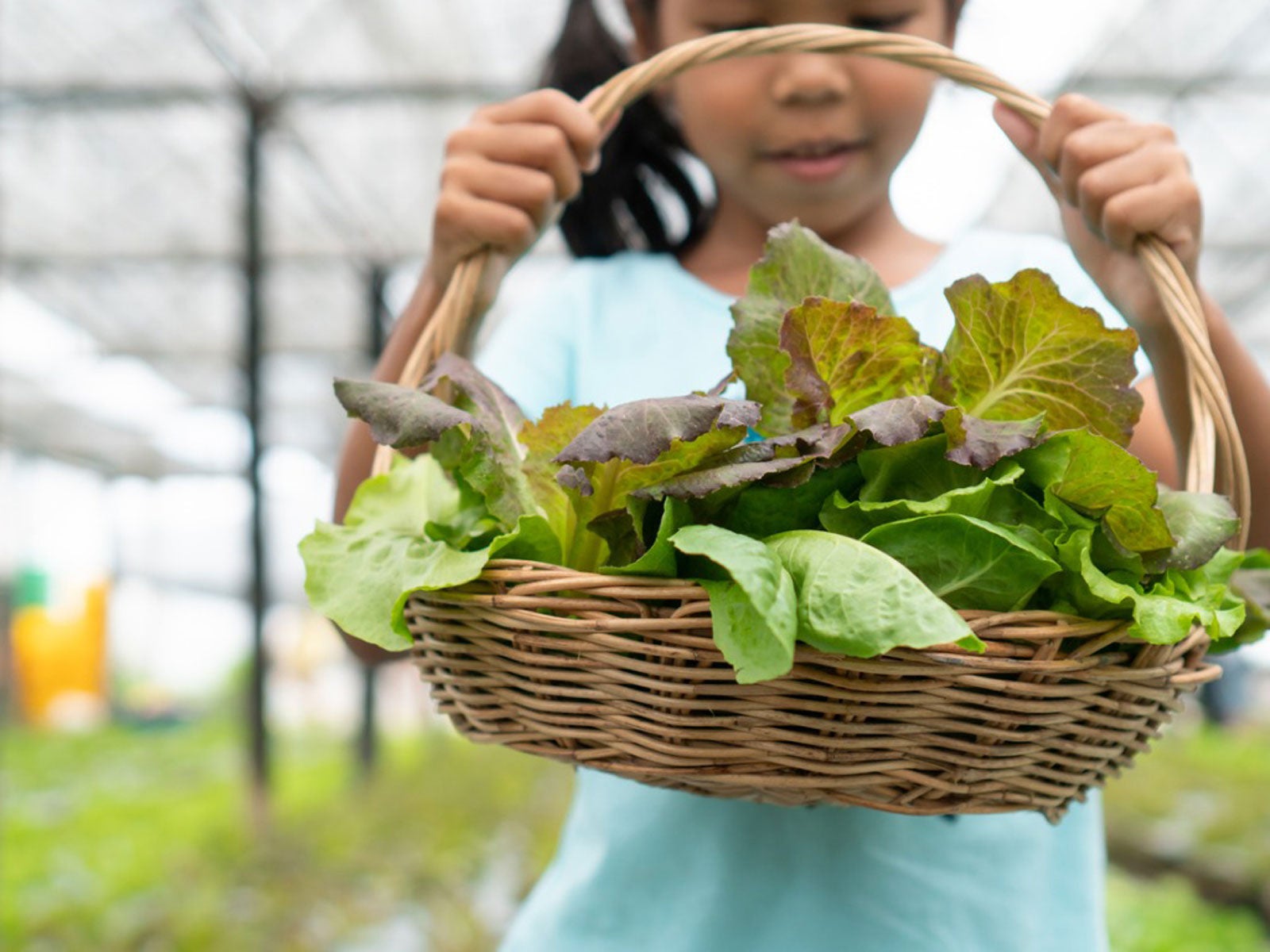Indoor Salad Gardening – Growing Indoor Greens With Kids


Got a picky eater? Has dinnertime become a battle over veggies? Try indoor salad gardening with your children. This parenting trick introduces kids to a variety of leafy vegetables and encourages the fussiest eater to try new taste sensations. Plus, growing indoor greens with kids is fun and educational!
How to Grow an Indoor Salad Garden
Lettuce and salad greens are some of the easiest vegetable plants to grow indoors. These leafy plants germinate quickly, grow fast in any sunny southern window, and reach maturity in about a month. Follow these steps to learn how to grow an indoor salad garden with your children:
- Make it fun – As with any kid-friendly project, encourage creativity by having your children decorate their own indoor salad-gardening planters. From recycled milk cartons to soda pop bottles, any food-safe container with drainage holes can be used for growing salad greens indoors. (Provide supervision when children use sharp objects.)
- Seed Choice – Give your children ownership of this project by letting them choose which varieties of lettuce to grow. (When growing winter salad with kids, you can find seeds year-round at gardening centers or online retailers.)
- Playing in dirt – This kid-centric activity never seems to grow old. Before planting salad greens indoors, have your children fill their planters outside or cover indoor work areas with newspaper. Use a quality potting soil, which you've premoistened until damp. Fill planters to within an inch (2.5 cm.) of the top rim.
- Sowing seed – Lettuce has tiny seeds which may be difficult for small children to handle. Have your child practice distributing seeds on a Styrofoam tray or purchase a mini hand-held seed pen for them to use. Sow seeds lightly across the top surface of soil and cover with a very thin layer of premoistened potting soil.
- Cover with plastic – To retain the moisture level needed for germination, cover the planter with plastic wrap. Check planters daily and remove the plastic wrap once seedlings appear.
- Provide plenty of sunlight – Once the seeds have germinated, place the planters in a sunny location where they will receive a minimum of eight hours of direct light. (When growing winter salad with kids, supplemental indoor lighting may be required.) Provide a step stool, if necessary, so your kids can easily observe their plants.
- Water regularly – When growing indoor greens with kids, encourage them to check the soil surface daily. When it feels dry, have them lightly water their plants. A small watering can or cup with a spout can keep spills to a minimum when allowing kids to help water.
- Thin lettuce seedlings – Once the lettuce plants have developed two to three sets of leaves, help your child remove individual plants to reduce crowding. (Use the suggested plant spacing on the seed packet as a guide.) Pinch the roots from the discarded plants, wash the leaves, and encourage your child to make a “mini” salad.
- Harvesting lettuce greens – Lettuce leaves can be picked once they become a usable size. Have you child cut or gently break off the outer leaves. (The center of the plant will continue to produce leaves for multiple harvests.)
Sign up for the Gardening Know How newsletter today and receive a free copy of our e-book "How to Grow Delicious Tomatoes".

Laura Miller has been gardening all her life. Holding a degree in Biology, Nutrition, and Agriculture, Laura's area of expertise is vegetables, herbs, and all things edible. She lives in Ohio.